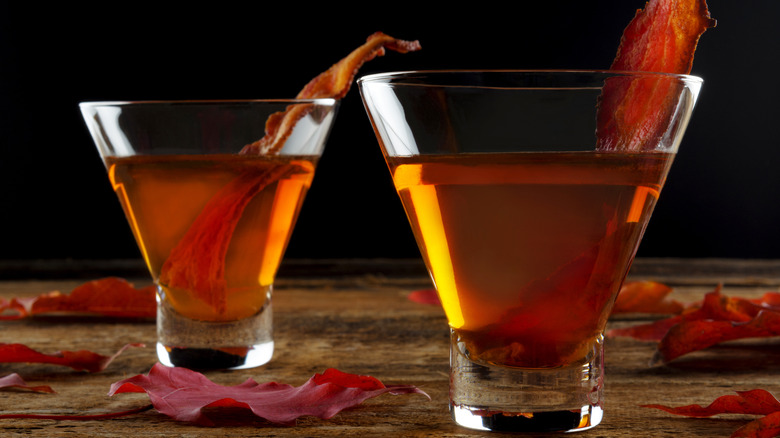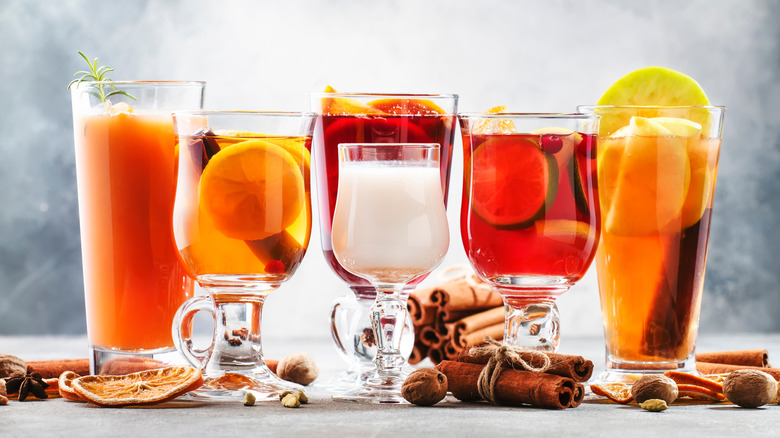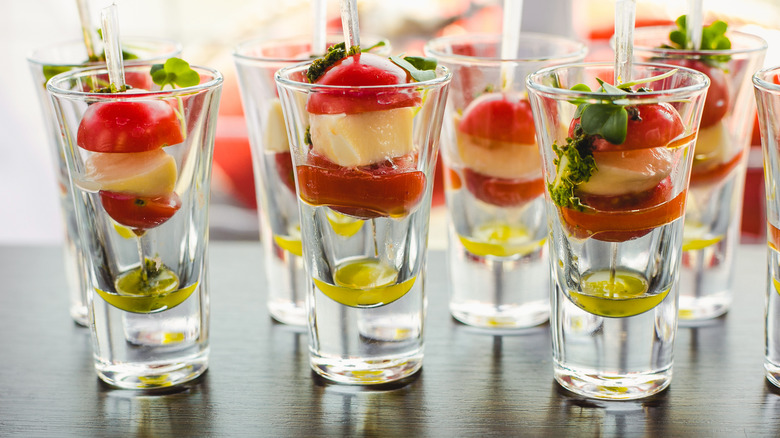Why You Should Be Fat-Washing Cocktails
Fat washing may not sound appetizing, but the resulting bacon hinted bourbon or browned butter rum certainly does. Fat washing has long been used in the perfume industry (there known as enfleurage), and the process started gaining popularity in the realm of cocktails around the early 2000s with New York bartender Don Lee's bacon-tinted Benton's Old Fashioned. Soon, bar experimenters were infusing spirits with savory notes from fats to serve up combinations like sausage and cheese Bloody Marys and olive oil-infused gin tonics. Essentially, savory fats add a whole new angle of complexity to liquors, injecting earthy, meaty, or umami notes and a soft mouthfeel into bar classics.
The process, though not as easy as infusing your cocktail's simple syrup, is surprisingly straightforward. It starts with soaking a fatty food (from pan-fried meat and animal fat to various oils and butters) in spirit and letting it rest for several hours. The spirit is then chilled, allowing the fat to solidify and be skimmed off, leaving behind a fat-washed liquor. Leftover oils from the fat also give the liquor a characteristic mouthfeel.
Once the Pandora's box of fat-washed spirits opens, there are virtually limitless potential combinations to make. Matching flavor profiles of the fats and spirits while also considering how you plan on using the fat-washed spirit will help you come up with the most delectable combinations. Peanut butter and jelly Old Fashioned, anyone?
Fat washing is simpler than it sounds
Fat washing extracts aroma and flavor compounds from fats and transfers them to a spirit. Since most fat-soluble and water-soluble flavor compounds are also alcohol-soluble, you can extract them from a fatty food by dissolving them in alcohol. The process is simple enough to do at home. Mix the fat and alcohol in a 1:4 ratio, meaning a quarter cup of liquid fat with one cup of spirit. You can tweak this ratio on subsequent batches depending on the intensity of flavor you desire. Certain fats, like bacon, impart a more robust flavor than, say, the subtle earthy notes of olive oil. In all cases, ensure you use fresh ingredients to avoid rancid flavors sneaking in.
While most oils are liquid at room temperature, you may have to melt some fats like butter or duck to use them. For bacon, cook over medium heat or using the cold pan method until the fat renders, then mix the liquid fat with the spirit. Give the mixture a good shake and rest for a few hours before freezing it overnight. The solidified fat can then be skimmed off, and straining the mixture through a fine cheesecloth ensures no fatty lumps remain. Store your homemade fat-washed alcohol in a clean bottle and prepare to raise your cocktail game. However, remember that the flavors degrade over time, so refrigerate and try to use it within a few days, which shouldn't be too difficult.
The best spirits to fat-wash and how to use them
To make a delicious fat-washed cocktail, you must be a good judge of (beverage) character and consider which flavors will get along. The robust flavor of bourbon goes well with the smokey, salty notes of fried animal fats, but it also works well with the mellowing effects of butter or coconut oil. More delicate spirits like gin can be elevated with earthy and herby notes from olive oil or the distinctive flavor of sesame oil. Butter adds a velvety texture and a tinge of creaminess, making it an excellent match for rum.
However, for more flavor-forward cocktails, using a neutral alcohol like vodka can get things going. Vodka and tequila also work well if you're trying to extract subtle flavors by fat-washing ingredients like walnuts or avocado oils, which are not as forthcoming with their notes but are a great vegan alternative.
And finally, any discussion of delicious fats is incomplete without cheese, and yes, it's possible to get some of that cheesy umami goodness into cocktails as well. Incorporating cheese into a fat wash is a little more complicated. Still, if you're motivated enough by the novelty of cheese, tomato, and herb-tinged Bloody Mary (a Bloody Margherita?), there's no reason not to try it. Add olive oil and basil-infused vodka to complete the gourmet beverage. A liquid lunch never tasted this good!


